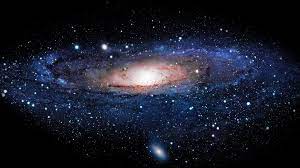Celestial bodies refer to objects that exist in space, beyond the Earth’s atmosphere. These objects can range from planets, moons, asteroids, comets, and meteoroids to stars, galaxies, nebulae, and black holes. Celestial bodies are an integral part of the universe and play a crucial role in shaping its structure and dynamics.
Planets are celestial bodies that orbit around stars (like our Sun) and are round due to their own gravity. Moons, on the other hand, are natural satellites that orbit planets. Asteroids are small rocky objects that can be found in the asteroid belt between Mars and Jupiter. Comets are icy bodies that travel through space, and when they approach the Sun, they develop a bright tail due to solar heating.
Stars are massive celestial bodies that emit light and heat through nuclear fusion processes in their cores. They form the basis of galaxies, which are massive systems containing billions of stars, along with dust, gas, and dark matter. Nebulae are vast clouds of dust and gas in space, and they can be regions where new stars are born or remnants of dying stars.
Black holes are fascinating celestial bodies with intense gravitational forces that result from the collapse of massive stars. They are so dense that not even light can escape their gravitational pull, making them invisible to direct observation.
Celestial bodies play a significant role in the study of astronomy, allowing scientists to explore and understand the universe’s mysteries and evolution. They inspire wonder and awe and continue to be a subject of scientific exploration and human curiosity.
| Celestial Body | Description |
|---|---|
| Planets | Round celestial objects that orbit stars (e.g., Earth, Mars, Jupiter) |
| Moons | Natural satellites that orbit planets (e.g., Earth’s moon, Mars’ moons) |
| Asteroids | Small rocky objects found in the asteroid belt between Mars and Jupiter |
| Comets | Icy bodies that develop a bright tail when approaching the Sun |
| Stars | Massive celestial objects that emit light and heat through nuclear fusion |
| Galaxies | Massive systems containing billions of stars, dust, gas, and dark matter |
| Nebulae | Vast clouds of dust and gas in space |
| Black Holes | Dense celestial bodies with intense gravitational forces, invisible to direct observation |
Important Links